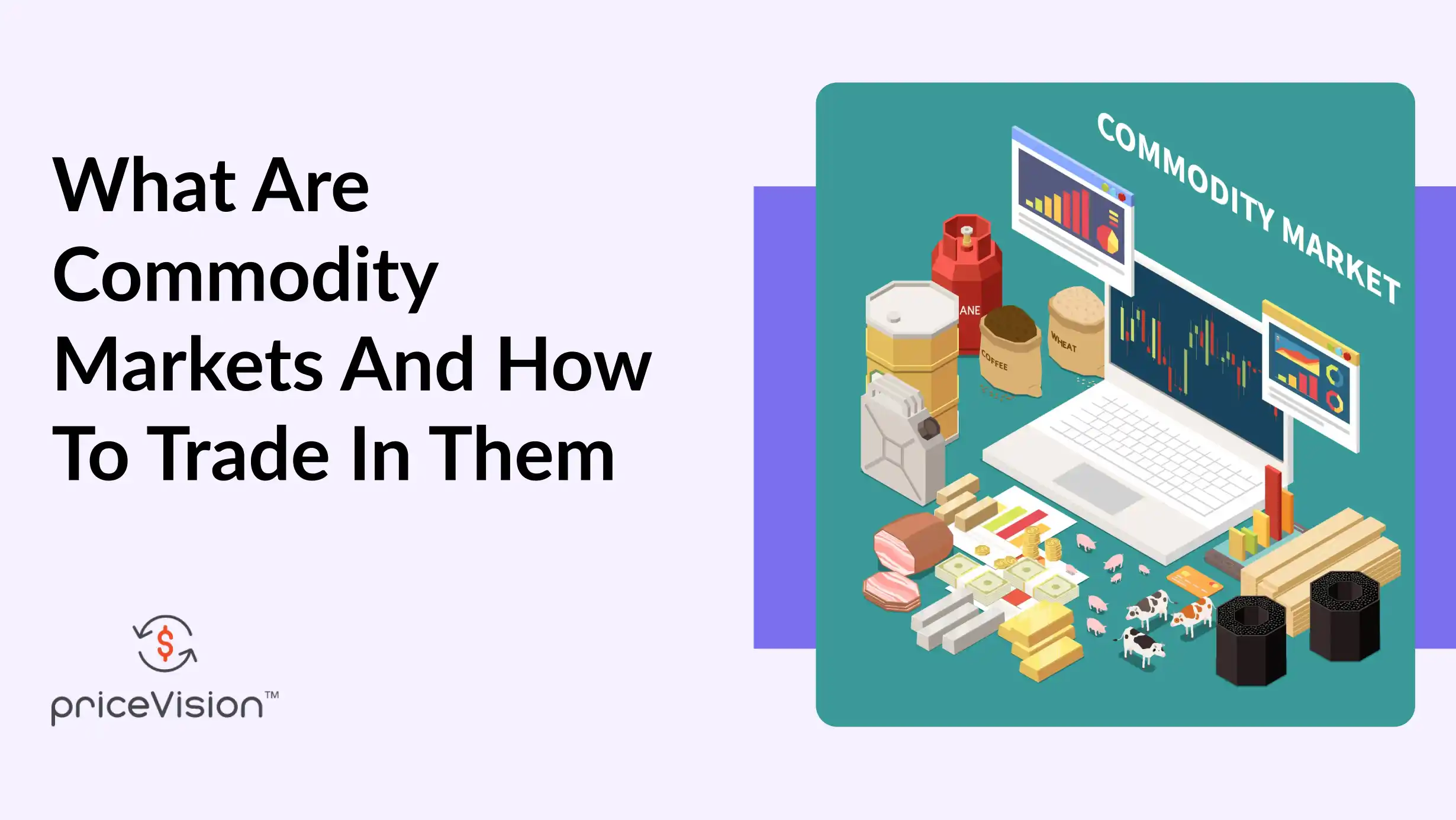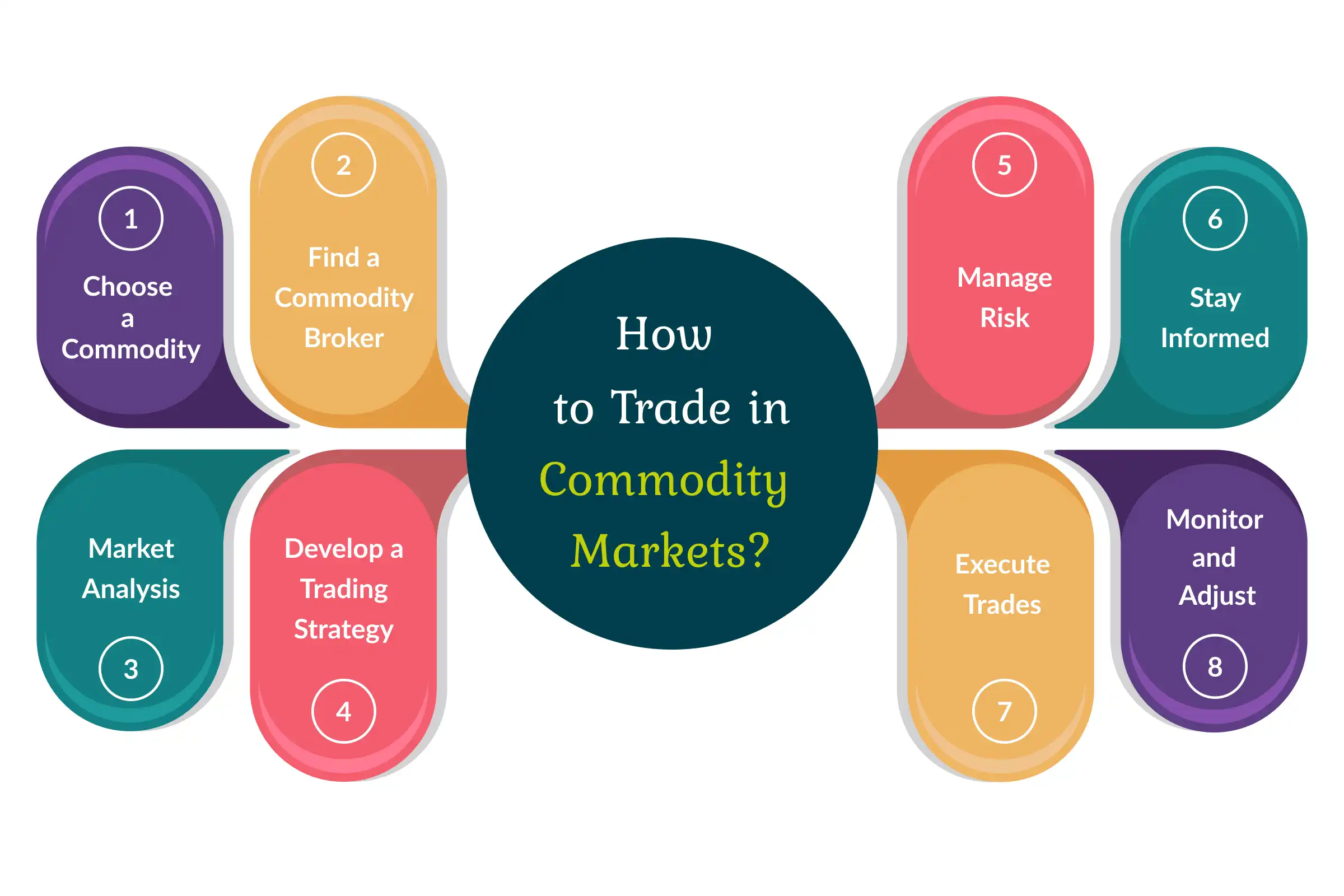What Are Commodity Markets and How to Trade in Them

Commodity market is vital to the world's economy. They trade essential raw materials, such as oil, gold, and crops. In our blog, we'll explain these markets. We aim to show you how to trade in them. We will also explore the role of commodity prices. Live commodity prices are crucial in this context. Additionally, we'll highlight the value of predicting prices in commodity trading. This skill is key for successful trades. Understanding these commodity markets can benefit your financial strategies. Stay informed with our comprehensive guide.
What Are Commodities?
Commodities are the basis of the global economy. They are tangible goods. These goods serve two purposes. They are either inputs for other products. Or, they are consumed directly. Typically, there are two categories of commodities.
● Hard Commodities: This group encompasses resources from nature. Examples are oil, gold, and metals like copper and silver. It also includes energy items such as natural gas and crude oil.
● Soft Commodities: This category covers farm-produced goods. Items like wheat, coffee, cotton, soybeans, and livestock fall under this group.
Each type plays a crucial role in global economic activities. They influence both production processes and consumer markets.
What Are Commodity Markets?
Commodity market facilitates the buying and selling of physical goods. These goods, called commodities, are of two kinds. Hard commodities consist of natural resources. Examples include oil, gold, and various metals. Soft commodities include agricultural products. These encompass wheat, coffee, and cotton. Commodity market is a critical platform for traders to exchange these commodities. It divides commodities into hard and soft types, based on their nature.
Commodity Trading Basics
Commodity trading involves predicting price changes of physical goods. Producers use it to protect against price shifts. Investors trade to profit. To start trading commodities, follow these steps:
● Pick a Commodity: Choose based on research and trends.
● Register with a Broker: This gives access to commodity market.
● Understand Supply and Demand: Learn what affects prices.
● Formulate a Strategy: Plan your buying and selling. Set profit and loss boundaries.
● Manage Risks: Invest within your means. Utilize stop-loss orders.
This process offers a systematic approach for those interested in commodity trading. It emphasizes careful selection, commodity market understanding, strategic planning, and prudent risk management.
Commodity Prices
Commodity prices are determined by commodity market forces. Supply and demand, geopolitical events, weather conditions, and economic factors can all impact commodity prices. Traders must keep a close eye on live commodity prices to make informed commodity trading decisions. You can access live commodity prices through various financial news websites and commodity trading platforms.
Price Forecasting
Price forecasting is essential in commodity trading. It involves using historical data, commodity market analysis, and economic indicators to predict future price movements. Reliable forecasts help traders make educated decisions and manage risk effectively. Be sure to stay updated with the latest commodity market information and forecasts for your chosen commodities.
Trading Strategies
There are various commodity trading strategies you can employ in commodity market. Some common approaches include:
● Day Trading: Buying and selling commodities within the same commodity trading day to profit from short-term price fluctuations.
● Swing Trading: Holding positions for a few days or weeks to capitalize on medium-term price movements.
● Trend Following: Identifying and following long-term price trends in commodities.
● Fundamental Analysis: Evaluating supply and demand fundamentals, economic factors, and geopolitical events to make commodity trading decisions.
● Technical Analysis: Using charts and technical indicators to identify patterns and trends in commodity prices.
Risk Management
Managing risk is crucial in commodity trading. Never invest more than you can afford to lose, and consider using stop-loss orders to limit potential losses. Diversify your portfolio to reduce risk further. It's also wise to stay updated on global events that could impact your chosen commodities.
How to Trade in Commodity Markets?
Trading in commodity market involves buying and selling these physical goods to either profit from price changes or hedge against future price fluctuations. In this brief overview, we offer clear steps to begin with commodity trading:

● Choose a Commodity: Start by selecting a commodity to trade. Base your choice on thorough research and an understanding of the commodity's market dynamics. Consider using tools like PriceVision AI for commodity price forecasting to inform your decision.
● Find a Commodity Broker: Open an account with a reputable commodity broker. Ensure they specialize in commodities and have a strong track record. The broker should provide access to the specific commodity markets you're interested in.
● Market Analysis: Use tools like PriceVision for commodity price forecasting. This technology can help analyze market trends and predict future price movements based on historical data and market indicators.
● Develop a Trading Strategy: Formulate a clear plan for your trading activities. Decide on your buying and selling points, set profit targets, and establish stop-loss orders to minimize losses.
● Manage Risk: Always prioritize risk management. Invest only what you can afford to lose. Diversify your investments to balance risks and returns, promoting responsible investing.
● Stay Informed: Keep abreast of the latest news and developments in the commodity markets. Pay attention to weather conditions, geopolitical events, and economic indicators, as they can significantly impact commodity prices.
● Execute Trades: Use your broker's trading platform to buy and sell commodities. Regularly monitor your positions to stay informed about market movements.
● Monitor and Adjust: Regularly evaluate the performance of your trading strategy. Be ready to modify your approach as needed to improve your trading outcomes.
Conclusion
Commodity markets offer opportunities for both hedging and profit-seeking. By understanding commodity markets, keeping an eye on live commodity prices, and employing effective commodity trading strategies, you can participate in this dynamic market. Price forecasting and risk management are essential tools to help you succeed in commodity trading. Start small, learn continuously, and make informed decisions to maximize your chances of success. Happy trading!